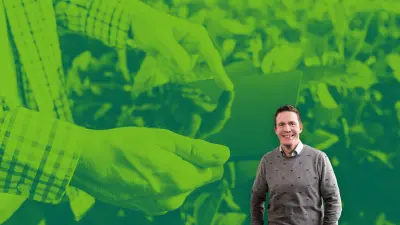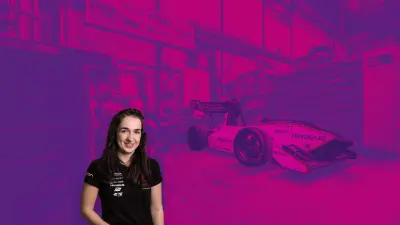Smart information flow
In dialogue with the data journalist and CEO of Datenfreunde GmbH
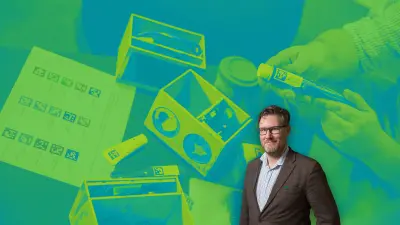
2018-10-11
Marco Maas is convinced that news has to find us, not vice versa. In his own apartment, the thought leader in data journalism has already turned his vision into reality.
The super smart home
In Marco Maas’ home, all devices interact and communicate with each another — heating, lighting, electrical outlets, entertainment devices, the vacuum cleaning robot, front door and body fat scale. Sensors everywhere — gigantic data streams that flow 24/7. “I connected, to date, roughly 130 smart devices. So, all lights are smart. All speakers are smart. I’ve got motion sensors, CO₂ sensors. You name it, I’ve got it.” One of the main aims of Maas’ super smart home is an information flow that never dries up. For example, the data reveals if the carbon dioxide level in the living room is too high and whether fresh air has to be let in — optically signaled by the changing colors of a lamp there.
130
The number of devices that Marco Maas has networked in his smart home.
The right news at the right time
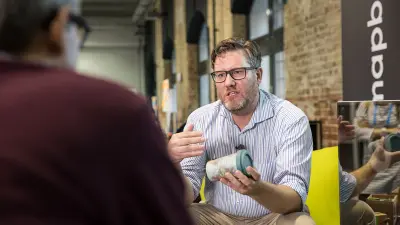
For the data journalist, it is obvious that people’s habits when consuming news are undergoing radical changes. Together with his ten-man team, including the two co-CEOs, he has developed the “xMinutes” news app. It presents target-oriented and personalized media content to users, all matching their interests and where they are currently located. Using networked devices, algorithms, and big data, people should be supplied with the right news at the right time.
“I have the goal that I don’t actively say something to Alexa, for example. I just want to have it happen before I even know I want it.”
Efficient and time-saving
His mission is a hyper-connected news world in which users can be supplied with information on demand everywhere and at all times. A specific example: When one stands in front of the mirror cleaning one’s teeth in the morning, it is picked-up by sensors and an audio device then reads the news of interest to the user. Another scenario and another possible application — one is still fast asleep in bed and traffic reports indicate that traffic jams are brewing and off goes the alarm clock ten minutes earlier to compensate for the delay. Maas: “News thus flows into the connected environment.”
Homeless Media
There are already innumerable devices available onto which news can be transmitted. “It will be the connected car, your connected home, the connected fridge.” Maas is therefore convinced that the news will become increasingly decoupled from the actual source. Instead of reading an article in a certain magazine or on a news website, news will be consumed mobile via Facebook, Instagram, newsletter or a diversity of apps. “Homeless Media” is the term used.
Media brands are losing relevance, algorithms are becoming more and more important
According to Maas, the development has led to media brands losing relevance, websites are visited less frequently. On the other hand, people have to learn to understand that in the future algorithms will play a greater role in their lives. “We need big data and we need data collections if we want to be able to compete on a worldwide level.” Ideally says Maas, news should reach users before they are aware they want it. This is necessary so that news producers can continue to reach their target groups.
An interview with Marco Maas, data journalist and CEO of Datenfreunde GmbH
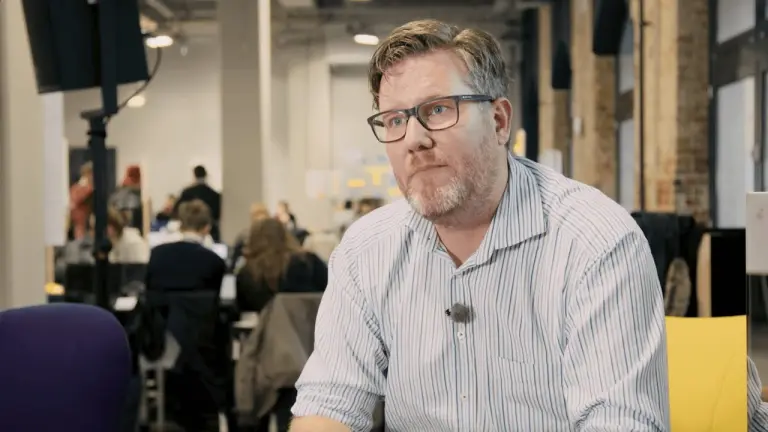
Loading the video requires your consent. If you agree by clicking on the Play icon, the video will load and data will be transmitted to Google as well as information will be accessed and stored by Google on your device. Google may be able to link these data or information with existing data.
Profile
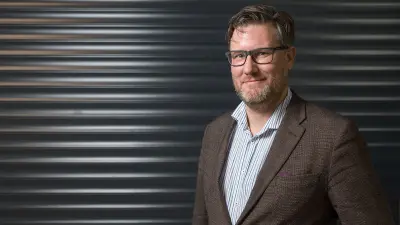
Marco Maas, 40
CEO of Datenfreunde GmbH
I connected, to date, roughly 130 smart devices. So, all lights are smart. All speakers are smart. I’ve got motion sensors, CO₂ sensors. You name it, I’ve got it.
Marco Maas who is living in Hamburg, is founder and CEO of Datenfreunde GmbH / OpenDataCity. He founded the data journalism agency with two partners in 2009 and since then he has realized more than one hundred projects including ones for magazines, newspapers, radio stations and some non-profit organizations. Datenfreunde’s latest project is the “xMinutes” news app that transmits context-based journalistic content.
Summary
Marco Maas sees big challenges for future news producers: Aided by connected devices, algorithms and big data, news has to reach consumers in a convenient moment and format.
